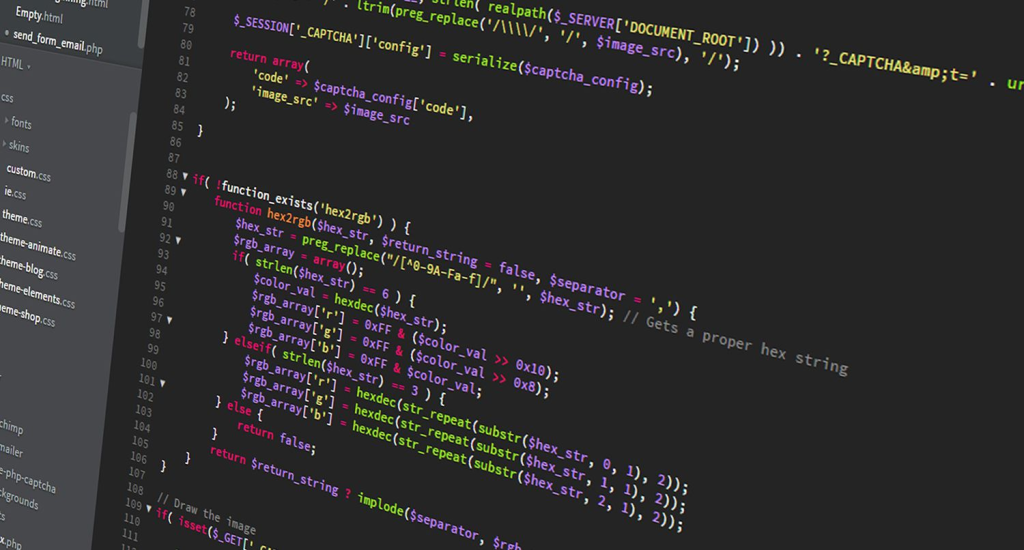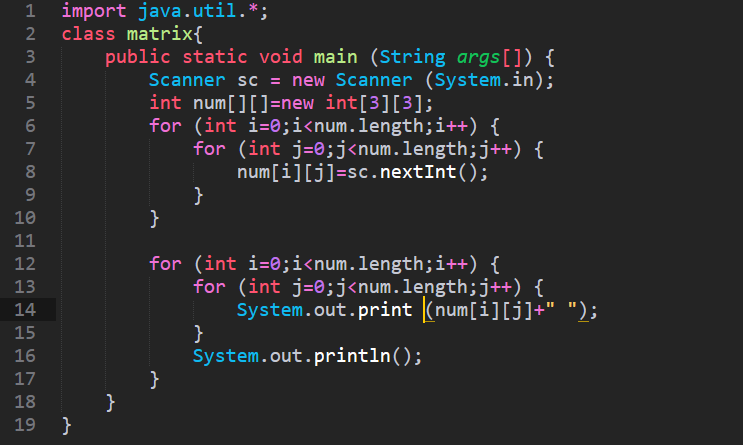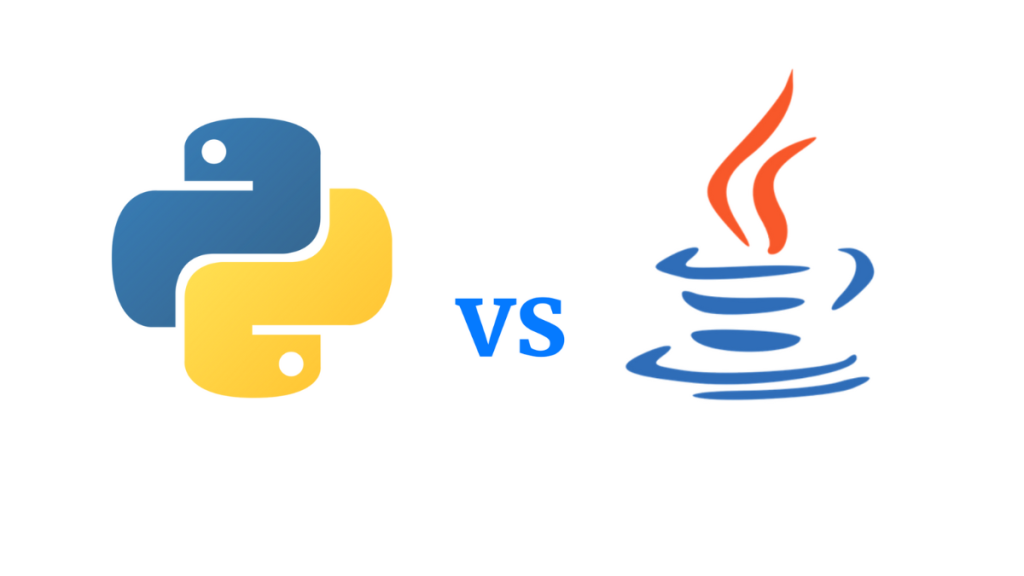Written By:
Scott McAuley
Welcome to my blog! I am a recognized expert in SMB IT solutions with over 25 years of experience as a Technology Executive. My expertise includes IT strategy, digital transformation, and optimizing IT operations to drive business growth. I specialize in leading IT teams, enhancing cybersecurity, and delivering innovative technology solutions that improve efficiency and performance. If you’re looking to explore IT strategies or need expert guidance on digital transformation and technology implementation, connect with me. Let’s collaborate to leverage technology for your business success. Reach out today!
In the ever-evolving world of programming, the debate between Python and Java continues to captivate developers. As we step into 2024, both languages have made significant strides, each boasting unique strengths and appealing to different aspects of software development.
Whether you’re a seasoned coder or a newcomer to the tech scene, understanding the distinctions between Python and Java is essential for choosing the right tool for your projects.
This article provides a comprehensive comparison of Python and Java, exploring their performance, versatility, ease of use, and more. Ready to unravel the nuances of these powerhouse languages and see which one reigns supreme in 2024?
Let’s dive in and discover what makes each of them tick and which one might be your perfect match for the year ahead.
Key Takeaways
- Python, created in 1991, is dynamic, high-level, and object-oriented. Its simplicity and readability make it ideal for beginners. With extensive libraries and frameworks like Django and Flask, Python is used in web development, data analysis, AI, and scientific computing.
- Python’s rich ecosystem, open-source nature, and intuitive data structures contribute to its popularity. Despite drawbacks like single-threaded execution and high memory consumption, Python’s rapid development and extensive libraries enhance productivity.
- Java, since 1995, is renowned for its “write once, run anywhere” concept. Compiled for faster execution, Java is favored for enterprise software, Android app development, and Big Data. Its object-oriented nature, platform independence, and robust community support make it versatile.
- Python excels in web development, data analysis, and machine learning, while Java shines in enterprise solutions and Android development. Python’s simplicity contrasts with Java’s performance, reflecting different priorities in the programming world.
- Consider project needs and career goals when selecting Python or Java. Python suits beginners and data-focused projects, while Java is favored for enterprise solutions. Understanding their strengths empowers informed decisions in the dynamic coding landscape.
Table of Contents
What is Python?

In 1991, Guido van Rossum created Python, which is a dynamic, high-level, interpreted, object-oriented programming language. It is versatile for various tasks due to its support for multiple programming styles like object-oriented, structured, and functional programming.
Python is an excellent option for beginners as its readability and simplicity allow them to concentrate on learning programming concepts rather than getting caught up in complex syntax. It is easy to use and develops quickly due to its integrated data structures and dynamic typing.
Python is popular because of its wide range of libraries and the presence of frameworks such as Django, Flask, and Asyncio, which meet various application development requirements. It is commonly utilized in areas such as web development, data analysis, artificial intelligence, and scientific computing.
In general, Python’s ease of use, clear syntax, and adaptability are why it is a top pick among developers in various fields, leading to its popularity and ongoing expansion within the programming world.
10 Features of Python
Below, we delve into the key features that make Python a standout programming language:
- Readability and Concise Syntax
- Ease of Learning
- Rich Standard Library
- Dynamic Typing
- Interpreted and Interactive
- Cross-Platform Compatibility
- Support for Multiple Programming Paradigms
- Extensibility with Other Languages
- Vibrant Community and Ecosystem
- Scalability and Versatility
Advantages of Python
Here are the advantages offered by Python’s vast ecosystems and frameworks:
- Rich Ecosystem of Third-party Modules
- Open Source with a Thriving Community
- Intuitive and Flexible Data Structures
- Dynamic Typing
- Portability Across Platforms
- Ease of Learning and Usage
- Accelerated Development with Extensive Libraries
- Enhanced Flexibility in Programming
- Cost-Effective and Community-Driven
- Boosted Productivity with Rapid Prototyping
Disadvantages of Python
Consider these potential drawbacks associated with Python as we examine its limitations and challenges:
- Single-Threaded Execution
- Lack of Native Mobile Support
- High Memory Consumption
- Limited Multithreading Support
- Challenges in Database Access Optimization
- Runtime Errors and Debugging Overhead
- Performance Considerations
Best Use Cases of Python
Explore the wide range of industries and situations where Python stands out as a potent tool, demonstrating its flexibility and ability to be used in different fields. Python’s diverse abilities are transforming modern technology and fostering innovation, from web development and data science to automation and machine learning.
Here are some of the best use cases of Python as a programming language:
- Data Analysis and Visualization
- Machine Learning and Artificial Intelligence
- Software Development and Web Development
- Automation or Scripting
- Software Testing and Prototyping
- Scientific and Numeric Computing
- Game Development
What is Java?

Java is a high-level, class-based, object-oriented programming language designed by James Gosling at Sun Microsystems. Its promise “write once, run anywhere” concept defines cross-platform compatibility. Since 1995, Java has been a dynamic language, spreading from simple text pages to richly dynamic multimedia applications.
Unlike interpreted languages like Python, Java is compiled. Thus, it can execute faster. Direct conversion to machine code means Java programs run fast and give the developer greater control over how hardware is used. This puts Java in the same family as other compiled languages like C, C++, Rust, Go, and Haskell.
While famously used for the development of Android apps, Java’s applications go far beyond mobile platforms. It is in demand among web developers and works excellently in Big Data and IoT areas. Its object-oriented nature is very similar to C and C++, and it can quickly complete the most complex coding tasks, making it available but very powerful for a range of projects.
Moreover, being platform-independent, it can efficiently execute the code under different environments without recompilation.
10 Features of Java
Let’s explore the fundamental features that distinguish Java as a prominent programming language:
- Simplicity
- Object-Oriented Paradigm
- Security
- Robustness
- Platform Independence
- Portability
- Architecture Neutrality
- Multi-Threading Support
- High Performance
- Community and Ecosystem
Advantages of Java
Discover the numerous benefits that Java offers to developers and businesses alike:
- Ease of Learning
- Object-Oriented Nature
- Enhanced Security
- Automated Memory Management
- Support for Functional Programming
- Platform Independence
- Community Support
- Multithreading Support
- Secure Environment
- Reliability and Performance
Disadvantages of Java
Explore the potential drawbacks and limitations associated with using Java in software development:
- Performance Concerns
- Memory Consumption
- Cost Implications
- Limited Machine Interactivity
- Garbage Collection Limitations
- Verbose Syntax
- Non-Native Look and Feel
- Complex Syntax
- Skill Acquisition Challenges
- Resource Intensiveness
Best Use Cases of Java
Explore the many industries and applications in which Java shines, showing you just how versatile and effective it is in the real-world solution of problems. From software development at the enterprise level and the development of mobile apps to games and financial systems, versatility becomes visible in Java.
Here are some of the best use cases of Java as a programming language:
- Mobile App Development
- Cloud Computing
- Big Data Processing
- Enterprise Software Development
- Artificial Intelligence
- Internet of Things Applications
- Chatbots and Other Marketing Tools
Which is More Popular in 2024?
By 2024, recent data indicates that Python has a slight advantage over Java in terms of popularity, marking a significant shift in the programming industry. Python’s flexibility and its efficacy in cutting-edge fields such as data science, machine learning, and artificial intelligence have contributed to its increasing popularity. This shift emphasizes the growing need for Python developers in the field because of its user-friendly language and wide range of library support.
Meanwhile, Java is prominent in enterprise software development, Android app development, and large-scale web applications. Those companies seeking stability and scalability are attracted to its strong durability, ability to work on any platform, and well-developed ecosystem. Despite Python’s increasing popularity, Java remains a significant player in programming, especially in the finance, telecom, and e-commerce industries.
Although Python’s popularity is rising, Java’s established position and broad use cases make it a strong competitor. The slight edge Python holds in popularity mirrors shifts in decisions made by developers and businesses, illustrating the fluidity in the tech industry in 2024.
Which One is Better and to Choose?
It is a complex choice to choose between Python and Java for your web development and machine learning career. Each has its advantages, and both can affect your earning potential. Your choice will majorly mirror your career objectives and the needs of your projects.
Python is excellent in web development because of its clear syntax and supporting frameworks in Django, which can basically hasten development. On the other hand, Java is strong in handling complex enterprise applications with ease. In machine learning, Python is upfront with its rich libraries of TensorFlow and PyTorch. These tools ease your dealing with complex algorithms.
| Aspect | Python | JavaScript |
|---|---|---|
| Primary Use Case | Widely used in web development, data analysis, artificial intelligence, scientific computing, and automation. | Predominantly used for web development, both front-end and back-end, as well as for building interactive web applications and server-side scripting. |
| Performance | Generally slower than JavaScript, especially for CPU-intensive tasks. However, optimized libraries and frameworks improve performance in specific domains like data processing. | Generally fast due to its asynchronous nature and Just-In-Time (JIT) compilation. It’s well-suited for real-time applications and dynamic web pages. |
| Learning Curve | Known for its readability and simplicity, making it easier for beginners to grasp fundamental concepts. Its syntax is concise and resembles English-like language. | Often perceived as more challenging for beginners due to its flexible nature and various paradigms (e.g., functional, object-oriented, asynchronous programming). However, its syntax is similar to many other programming languages. |
| Salary Outlook | Python developers often command high salaries due to the language’s versatility and widespread use across industries such as finance, tech, and academia. Salaries vary based on experience, location, and specialization. | JavaScript developers are in high demand, especially for web development roles. Salaries are competitive, with experienced developers earning significant compensation, particularly in tech hubs like Silicon Valley. |
| Community Support | Python boasts a robust and diverse community, offering extensive documentation, libraries, and frameworks for various purposes. Popular libraries include NumPy, Pandas, Django, and Flask. | JavaScript has a vibrant and active community, with numerous frameworks, libraries, and resources available for front-end and back-end development. Notable frameworks include React.js, Angular.js, Vue.js, and Node.js. |
| Ecosystem | Python’s ecosystem is mature and stable, with a wide range of libraries and tools for different domains, including web development, machine learning, data analysis, and automation. | JavaScript’s ecosystem is highly dynamic and rapidly evolving, driven by constant innovation and updates. It encompasses a vast array of libraries, frameworks, and tools for front-end and back-end development, as well as mobile and desktop applications. |
| Scalability | Python is often criticized for scalability issues in large-scale applications due to its Global Interpreter Lock (GIL) limitation, which can hinder multi-threaded performance. However, solutions like multiprocessing and asynchronous programming mitigate these limitations. | JavaScript is highly scalable, thanks to its event-driven, non-blocking I/O model, which enables efficient handling of concurrent requests and tasks. Node.js facilitates server-side scaling through its event-driven architecture and lightweight runtime environment. |
Understanding these differences is crucial in relation to your career goals. Having this comprehension will assist you in making an informed decision between Python and Java. The choice you make is crucial, impacting not just your success in web development or machine learning but also guiding your career path and financial rewards.
Conclusion
In conclusion, the Python vs. Java debate in 2024 highlights both languages’ unique strengths and applications. Python’s simplicity and versatility make it ideal for web development, data analysis, and machine learning, while Java’s robust performance and scalability suit enterprise applications and Android development.
Your choice between Python and Java should align with your project requirements and career goals.
Caught in the Python vs. Java Debate?
Keep exploring at texmg.com! Dive into more expert comparisons in our blogs, and don’t forget to explore our budget-friendly IT services to support your development needs.
Let’s navigate the coding landscape together!
FAQ
Which is Better, Python or Java?
It depends on the context and requirements. Python is favored for its simplicity and versatility, while Java is known for its performance and scalability in enterprise applications.
Is it Better to Learn Java or Python First?
It depends on your goals. Python is often recommended for beginners due to its simple syntax and readability. Java is advantageous for learning fundamental object-oriented programming concepts.
Can Python do Everything Java can?
In most cases, yes. Python and Java have overlapping functionalities, but each has its strengths and weaknesses. Python excels in rapid development and ease of use, while Java is preferred for performance-critical applications and enterprise software.
Will Python Replace Java?
Unlikely. While Python’s popularity is growing, especially in areas like data science and web development, Java remains a dominant force in enterprise systems and Android app development. Both languages have their niches and are likely to coexist for the foreseeable future.






